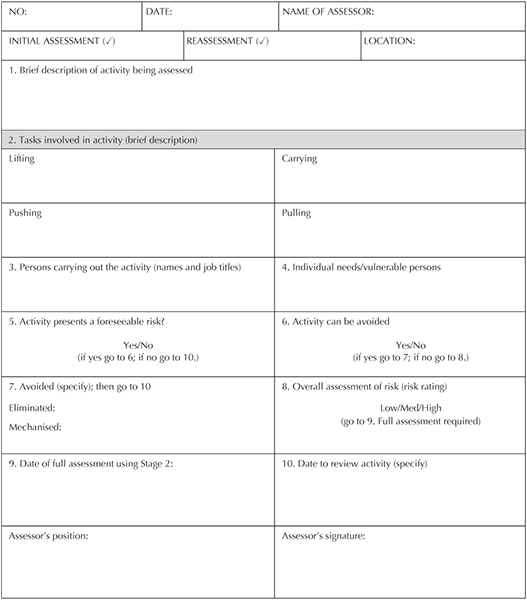13
Manual Handling
Manual handling activities can cause many types of injury and most commonly affect the back and upper limbs. Almost one-third of injuries reported to the enforcing authority have been attributed to the manual handling of loads. All dental environments carry out some form of manual handling operations which involve an individual moving or supporting objects. This may include lifting the object and putting it down, or pushing or pulling the load. In dentistry, we must consider the nature of the load as it could be an inanimate object or a person. These activities must be assessed in order to identify how the activity may cause injury and determine appropriate steps to reduce the risk of injury to the lowest level possible.
- Health and Safety at Work etc. Act 1974:
Employers have a general duty to their employees, so far as is reasonable, to ensure safety and absence of risk to health in the use, handling, storage and transport of articles and substances.
- Manual Handling Operations Regulations 1992:
Employers are required to avoid manual handling activities where there is a foreseeable risk of injury, if it is not possible to avoid the activity, than a risk assessment should be undertaken to reduce the risk of injury.
- Management of Health and Safety at Work Regulations 1999:
Employers must undertake suitable and sufficient assessments of risks to the health and safety of employees and implement reasonable controls.
The injuries and health problems that may result from incorrect handling techniques and poor systems of work are numerous. The most common types of manual handling injuries are as follows:
- Cuts and bruises to the fingers, hands and feet
- Sprained ligaments
- Sprained and inflamed tendons
- Trapped nerves
- Ruptured and displaced discs
- Hernias
- Fractures
- Stress fractures
To add to the problem, injuries may not occur as a result of a single event and might therefore not be recognised immediately. Repeated exposure to the activity over time may result in more long-term effects and, in severe cases, disability. In addition to the injuries sustained by the person carrying out the activity, we must also consider others in the immediate vicinity who may be at risk from the activity. In particular, if the task involves moving a person they may also be injured if this is carried out incorrectly.
Manual Handling: Stage 1 – Avoid Tasks
Avoidance of the manual handling activities, which present a foreseeable risk and therefore could result in injury, must be the first consideration in all instances. In order to determine if a risk exists, you first need to identify the type of activities that constitute ‘manual handling’.
Identify Manual Handling Activities
This can be done by observing people carrying out their day-to-day duties, talking to staff to establish if they have any concerns or individual needs and referring to significant event analysis and accident reports (Figure 13.1). To assist in identifying activities, it is useful to break them down into tasks as follows:
- Lifting
- Carrying
- Pushing
- Pulling
Figure 13.1 Manual handling activities assessment.

The information gathered will help to determine if activities present a foreseeable risk which needs to be addressed. It may be that all manual handling activities are identified as presenting a risk. However, in some instances the risk may be negligible. For example, in the transportation of one instrument tray from the surgery to the decontamination area, the manual handling risk is negligible while the risk of transmitting infection is greater. Table 13.1 will help to determine if a foreseeable risk is present from lifting and lowering a load. This table provides guideline weights for men and women who, when lifting in that zone, would normally be safe. It is not an authoritative account of the weight everyone can handle as other factors will need to be considered.
Table 13.1 Guideline weights for men and women
| Zone | Load held close to body | Load held at arm’s length |
| Full height (arms above head) | Men – 10 kg Women – 5 kg | Men – 5 kg Women – 3.5 kg |
Stay updated, free dental videos. Join our Telegram channel

VIDEdental - Online dental courses


